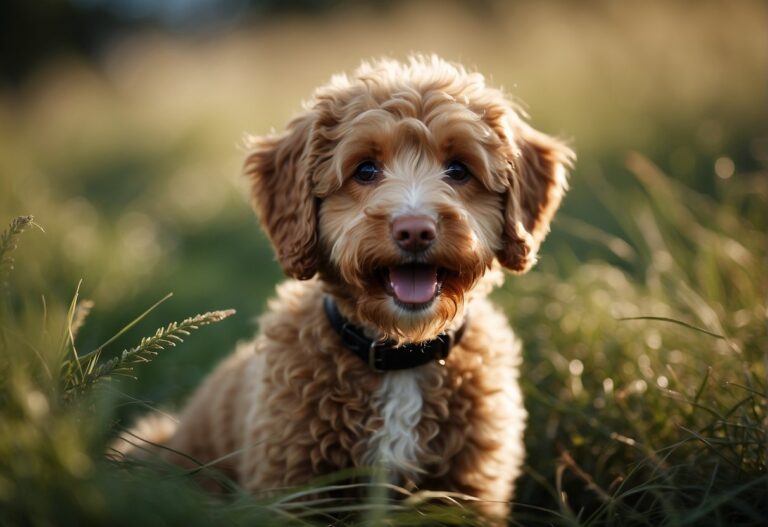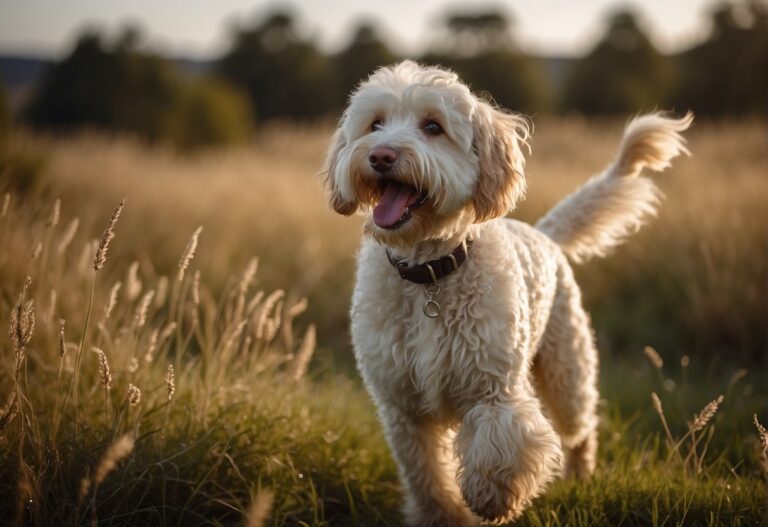Australian Multigen Labradoodles – The Ultimate Guide

Australian Multigen Labradoodles have become increasingly popular for their friendly demeanor, hypoallergenic coats, and intelligence. Originating from Australia, these dogs are the result of careful breeding that combines the best traits of the Labrador Retriever and the Poodle, along with several other breeds to maintain genetic diversity and vigor. This approach has led to a consistent and desirable set of characteristics that make Multigen Labradoodles excellent family pets.
One of the most appealing aspects of Australian Multigen Labradoodles is their temperament. Known for being social and good-natured, they often make great companions for both adults and children. Additionally, their low-shedding coats are an excellent match for families with allergies. Proper health testing and breeding practices have contributed to the robust health of the breed, ensuring that these dogs not only bring joy to your home but also live healthy lives as a part of your family.
- Australian Multigen Labradoodles are known for their sociable nature and suitability as family pets.
- They are the result of careful breeding, which includes a hypoallergenic coat that benefits individuals with allergies.
- Responsible breeding practices have been essential in maintaining the health and wellbeing of the breed.
History and Development of Australian Multigen Labradoodles

The Australian Labradoodle is not just a simple crossbreed but rather a carefully developed breed with a rich history and sophisticated breeding strategy aimed at creating optimal guide dogs. As you explore its roots, you’ll discover a deliberate mix involving Labradors, Poodles, and other breeds, merging to form what is now known as the multi-generational Australian Labradoodle.
Origin of the Breed
The Australian Labradoodle initially appeared thanks to efforts in Australia to combine the gentle nature of the Labrador Retriever with the hypoallergenic coat of the Poodle. This carefully crafted breed was first put into practice by the Royal Guide Dogs Association, aiming to produce an allergy-friendly guide dog. The official beginning of this breed dates back to 1989.
Evolution into Multigenerational
As breed development progressed, the Australian Labradoodle was refined by incorporating characteristics from other breeds like the English and American Cocker Spaniel, which contributed to its unique appearance and temperament. Today’s multi-generational Australian Labradoodles are the result of careful breeding over several generations, with established standards governed by organizations such as the Australian Labradoodle Association of America (ALAA). These generations are carefully tracked to ensure consistency in health, coat, and temperament.
Breed Characteristics Of Australian Multigen Labradoodles

When exploring the world of Multigenerational Australian Labradoodles, you’ll encounter a variety of traits that make this breed well-loved. From their amiable temperament and non-shedding coats to a range of sizes suitable for different living situations, they are often considered ideal family pets, particularly for allergy sufferers.
Temperament and Personality
Known for their friendly and sociable nature, Multigenerational Australian Labradoodles exhibit a temperament that is both playful and gentle. They are intelligent dogs which makes them highly trainable and able partners for both activities and therapy work. You’ll find their personality to be eager to please, making them excellent companions for families and individuals.
Physical Attributes
Size plays an essential role in defining the physical attributes of Australian Labradoodles. The Standard size typically measures about 21 to 24 inches in height, while the Medium size stands around 17 to 20 inches. If you have limited space, the Mini Labradoodle might be the ideal size for you, as they grow to a modest 14 to 16 inches tall.
Coat Types and Colors
Australian Labradoodles can sport a variety of coat types, from wavy to curly, each with a soft texture. These coats are known for being non-shedding and allergy-friendly, a major perk for pet lovers with sensitivities. As for colors and patterns, you can expect to see a spectrum that includes cream, gold, apricot, chocolate, and sometimes even parti-colored coats.
Size Standards
Understanding the size standards is crucial when considering a Labradoodle:
- Standard: Typically 21 to 24 inches tall, weighing 50 to 65 pounds
- Medium: Generally 17 to 20 inches tall, with a weight of 30 to 40 pounds
- Mini: Smaller in stature at 14 to 16 inches tall, and weights vary around 15 to 25 pounds
Health and Breeding

Understanding the importance of health testing and adherence to breeding standards is critical for ensuring the well-being of multigenerational Australian Labradoodles.
Health Testing and Genetics
Your Australian Labradoodle’s health starts with genetic health testing. Breeders have a responsibility to conduct extensive health testing on both dams and sires before breeding to assess the risk for heritable diseases. A genetic health guarantee may be offered by reputable breeders, like those affiliated with the Australian Labradoodle Association of America (ALAA), which reflects confidence in their breeding program.
- Common Tests: Hip and elbow dysplasia, eye examinations, and genetic panels for breed-specific conditions.
- Objective: To minimize the likelihood of genetic disorders being passed on to the puppies.
Breeding Standards and Ethics
Breeding standards and ethics set the bar for the practices of breeders involved in the development of purebred dogs. The ALAA endorses breeders who adhere to a stringent code aimed at fostering the health, temperament, and quality of the breed.
- Ethical Breeding Practices: Includes maintaining proper living conditions for dogs, providing enriching experiences, and ensuring responsible mating.
- Breeder Commitment: Ethical breeders commit to enhancing the breed’s quality and avoiding overbreeding or inbreeding.
By understanding these protocols and the efforts behind breeding purebred Labradoodles, you contribute to the promotion of robust practices that benefit the health and longevity of these cherished animals.
Adopting and Raising Labradoodles

When you decide to welcome an Australian Multigen Labradoodle into your life, you’re choosing an intelligent and affectionate family companion. Navigating the process of adoption and understanding the essentials of raising such a breed is crucial for a harmonious integration into your home.
Choosing a Breeder
Select a reputable breeder who prioritizes the health and socialization of their Labradoodle puppies. Ensure they provide comprehensive details about health screenings and parental lineage. The cost of a Labradoodle can reflect the breeder’s quality, so a higher price often indicates a breeder’s commitment to excellence.
Labradoodle Puppies and Socialization
Right from birth, interaction with humans and other dogs is vital for your puppy’s development. Inquire about the socialization practices the breeder employs, as this will affect your puppy’s ability to adapt to new situations and integrate with your family. Puppies that are accustomed to a home environment might settle into your space more readily.
Training and Care
Take advantage of the Labradoodle’s easy-to-train nature by establishing a training routine early on. Consistent, positive reinforcement techniques work well with this smart breed. They have fast learning abilities, which make them a delight to train. Remember that grooming is an essential part of care for their coats to keep them healthy and looking great.
Family Integration
Introducing your Labradoodle to your home involves careful planning, especially if you have children or other pets. Create a welcoming space in your home and maintain a calm environment as your dog acclimates. Continuous social interaction within the family will cement the Labradoodle’s role as a loyal and integrated family member.
Your careful selection, combined with a nurturing approach to socialization, training, and family integration, will ensure your Labradoodle grows into a well-adjusted and beloved member of your household.
Frequently Asked Questions
In this section, you’ll find in-depth answers to some of the most common inquiries about Australian multigen Labradoodles, to assist you in understanding the breed and making informed decisions.
What should I consider when looking for Australian multigen Labradoodle puppies for sale?
When searching for Australian multigen Labradoodle puppies, it’s crucial to assess the breeder’s reputation, the health testing of the parents, and the puppy’s socialization and early training experiences. Prioritize breeders who demonstrate a clear commitment to the health and well-being of their dogs.
How is the multigenerational Australian Labradoodle different from other Labradoodles?
Multigenerational Australian Labradoodles are bred over multiple generations to stabilize traits like coat quality and temperament, differentiating them from earlier-generation Labradoodles that might have more variability in these characteristics.
What are the characteristics that make Australian Labradoodles special?
Australian Labradoodles are known for their intelligence, friendly disposition, and low-to-shedding coats, which makes them a suitable option for families with allergy concerns, as well as for their consistent temperaments, which can make them excellent therapy or service dogs.
How much can I expect to pay for a multigen Australian Labradoodle?
The price of a multigen Australian Labradoodle can vary widely based on the breeder, location, pedigree, and other factors. Generally, you can expect to pay anywhere from a few hundred to several thousand dollars.
Are there specific health concerns to be aware of when adopting a multigen Australian Labradoodle?
Like all breeds, Australian Labradoodles may be predisposed to certain hereditary conditions. Ensure your breeder conducts comprehensive health testing on their breeding dogs to mitigate the risk of genetic disorders.
What care and grooming needs do multigenerational Australian Labradoodles have?
The non-shedding coat of a multigen Australian Labradoodle requires regular grooming, including brushing several times a week and professional grooming every 6-8 weeks, to prevent matting and maintain coat health. Regular exercise and mental stimulation are also important to keep these active and intelligent dogs happy.






